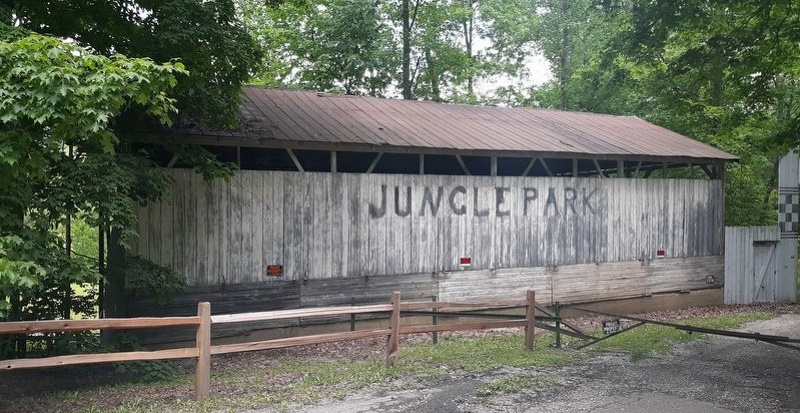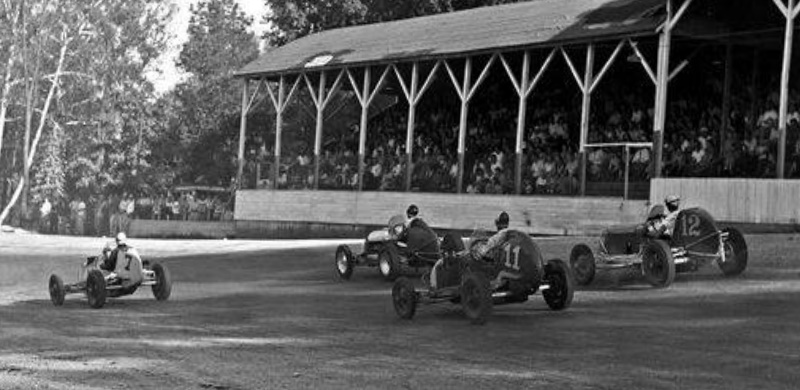by Michael Satterfield - 01/02/2023
Indiana is recognized globally for its auto racing, with the Indianapolis Motor Speedway and its annual 500-mile race being among the most famous in the sport. However, there is another track located in the state that has a significant and, in some ways, infamous history. Nestled among the trees of the Wabash River valley, approximately 50 miles west of Indianapolis, lies Jungle Park Speedway.
The track was built in 1926 by Indiana entrepreneur Earl Padgett and quickly gained a reputation as a destination for some of the best sprint car drivers of the era. It was a popular choice for drivers looking to showcase their skills and make a name for themselves in the Indiana racing scene, and several drivers who raced at Jungle Park went on to achieve success at the Indy 500, including three-time winners Wilbur Shaw and Mauri Rose.
The photo above is of driver Peter Alberts who is behind the wheel of the 1937 "O'Day Offy" racer. The car was built by M.E. "Hank" O'Day of Charleston, Illinois in 1937 powered by a 270ci Offenhauser engine. Peter Alberts drove this car at Jungle Park in 1938 and it is typical of the kind of car that was raced in the speedway's heyday.
However, despite its popularity, Jungle Park was also known for being a dangerous track. The half-mile oval was tight and fast, and several drivers lost their lives competing there. In only its second year of operation, a track manager was tragically killed while attempting to repair a divot in the dirt track during a race. The following year, both a driver and a spectator lost their lives when the car careened off the track and into the crowd. By 1931, three more drivers had died at Jungle Park.
Track safety was not a priority in the early 20th century, and the track had no outer wall or fencing between the track and the spectator grandstands. Drivers who lost control often ended up in the trees that surrounded the track or in the waters of Sugar Creek, which bordered the backstretch.
Despite the risks, Jungle Park continued to host races for more than 25 years, with a brief pause during World War II. Some improvements were made over time, such as the addition of protective fencing and a gravel and oil mix on the dirt track surface, but accidents and declining crowds eventually led to the closure of Jungle Park in 1955. It reopened briefly for one midget car race in 1960, but that ended in tragedy as well, when a race car hit a pothole, lost control, and flew through the fence, killing a spectator.
Today, only one of the original five grandstands remains, and the track surface has been reclaimed by grass and trees. However, a state historical marker stands at the entrance as a testament to the significance of Jungle Park Speedway. In total, eight drivers who raced at Jungle Park went on to win at the Indy 500 making Jungle Park one of the most important race tracks in Indiana you've likely never heard of.








_websize.jpg)










